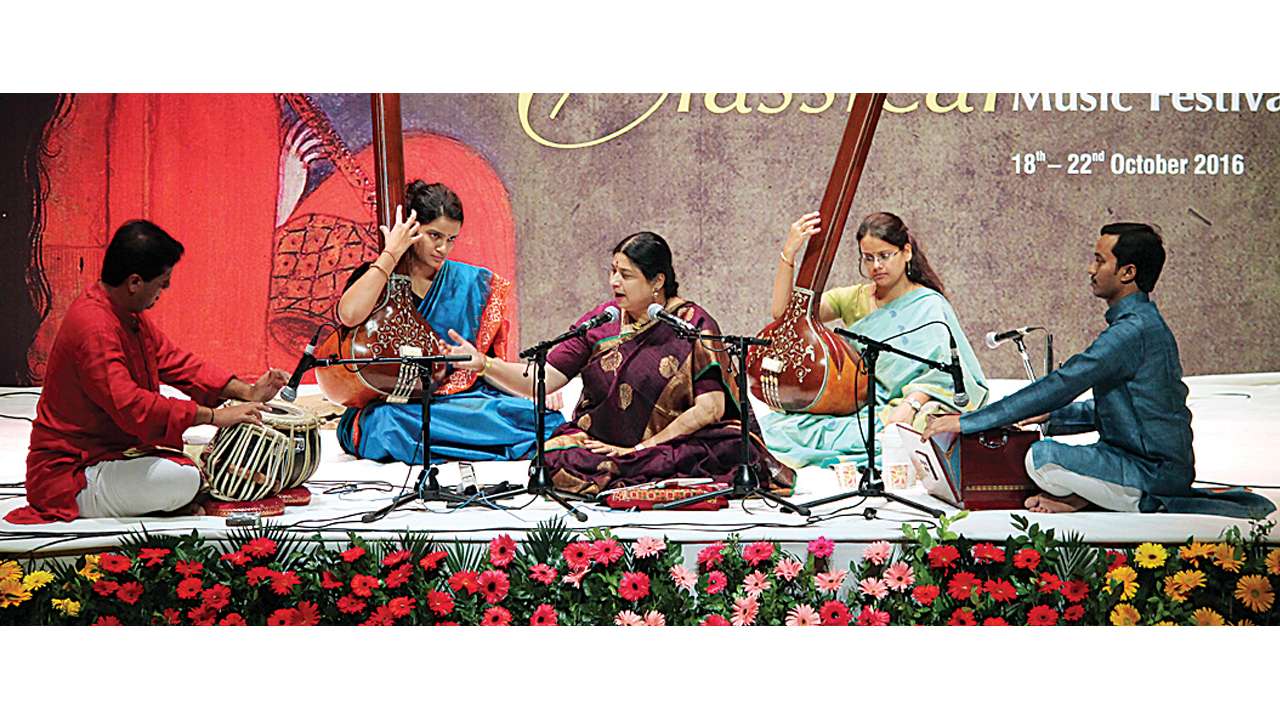
In almost every concert of Indian classical music, we see a younger person sitting slightly behind the main vocalist, playing the tanpura. The expression on the faces of such junior artistes is always the same. Sharp focus and total attention, ever ready to fill in the gaps when the main singer takes a pause. They must anchor the show to enable the leader to soar on the wings of imagination. We know how the harmonium, shehnai or tabla contribute to the performance. But who bothers about the vocal accompanist? We don’t recall their names, we don’t remember what they look like.
Only when I became vocal accompanist to Carnatic musician MS Subbulakshmi did I realise that this was no easy task, but a crucial role. Singing along with the main artiste is only a small part of the brief. Banking the whole repertoire of the main artiste for instant recall at her need is vital, but this accomplishment doesn’t cover the whole demand.
Since the main artiste is usually the accompanist’s guru, a whole paraphernalia of activities before and after the concert can turn the act of vocal support into a complex ritual, an exhausting mission. From secretarial to valet duties, from packing clothes to pressing feet, this can be full-time service, at home and on tour.
The idea is not to extract labour from the disciple, but to train him/her in concert strategy, which is a different ballgame from merely learning music. Such accompanists are meant to progressively participate more and more in the presentation, until they are ready to take the stage as soloists. Accompaniment is supposed to be apprenticeship for their own careers.
How does this work in practice? We have seen Sanjeev Abhyankar, who accompanied Pandit Jasraj, turning into a successful concert singer. But what about those innumerable support singers past and present, who got nowhere beyond playing second fiddle so to speak? Remember Krishna, daughter of Gangubai Hangal, who never got out of the shadow? Or Madhav Gudi, who always remained Bhimsen Joshi’s support voice? What about the cohort of disciples, all fine musicians, who sang with Semmangudi Srinivasa Iyer, the patriarch of Carnatic music? None made it to the top.
Take the three women singers who broke male domination and emerged as top-notch Carnatic musicians of the last century. How ironical that their own gifted vocal accompanists could not go beyond their supporting roles! After 15 years of faithful service, the legendary ML Vasanthakumari’s accompanist Prabhavati slipped into the margins. She found solace in teaching. Lalitha Sivakumar must have been overjoyed to find herself singing with DK Pattammal, her distinguished mother-in-law. But higher goals eluded her. So she made sure that her own daughter became a star singer.
When Radha Viswanathan died last month, even veteran musicians remembered her as a matchless accompanist to her stepmother MS Subbulakshmi. For a few years Radha did taste the limelight as a young Bharatanatyam dancer, with some role reversal as Subbulakshmi sang for her. But all too soon the idyll ended and Radha was back at her mother’s side, until protracted illness made it impossible for her to continue giving vocal support. She found hope and strength in training her granddaughters to keep the torch burning.
Today disciples do not offer long term vocal support to their gurus. They move on before they get typecast as sidemen. Also, globetrotting musicians need to travel light. They depend on their instrumental players to back them up. Besides, the electronic tanpura has replaced the real one, needing not live fingers, but a plug point for activation.
However, chronicles of support singers in Indian art music continue to intrigue me. They bristle with drama and sentiment — enough to fill several novels. What must it be like to be almost, but never there? Always half lit? Always an echo? The blurred splotch behind the painted face? Who will write their stories of commitment and devotion? Frustration and disillusionment?
And then, suddenly, I realise that these questions rivet me because they are not about vocal accompanists at all. No, they are not about somebody else’s experience. These are the tantalising ambiguities I face in my own life. A moment of truth that every one of us, at some time or the other, has known only too well. The real question is, therefore, an eternal human dilemma: how do we deal with the bitter pill, when tireless Sisyphean effort cannot take us to the goal, and hope fades away? Do we plod on? Or crack up? Or find the strength to change tracks and keep going?
The author is a playwright, theatre director, musician and journalist